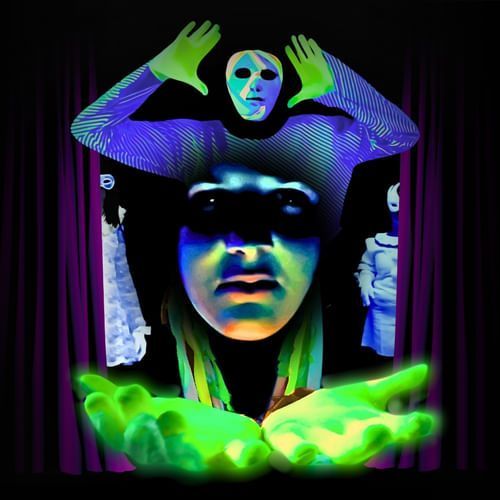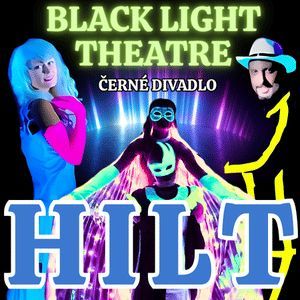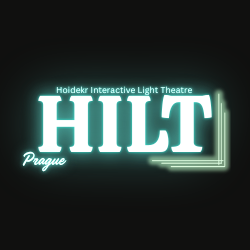History of black light theatre genre

HILT Black Light Theatre is one of Prague’s most distinctive theatre companies, co-founded by actress and director Štěpánka Pencová and dancer and director Theodor Hoidekr in 2007. Known for combining traditional black light theatre techniques with modern staging, HILT has performed on stages around the world — from Guatemala to India — while maintaining its intimate home stage in Prague. The company is recognized for its creative use of UV effects, non-verbal storytelling, and interactive elements that make each performance unique.
The history of black light theatre reaches back far further than most people realize. In Asia, particularly in China and Japan, traditions of shadow and puppet theatre employed light and darkness to create illusions of movement, transformation, and fantasy. These traditions laid the groundwork for what would later inspire artists in Europe. In the 18th and 19th centuries, stage magicians began using simple tricks of concealed lighting to surprise their audiences. One of the most influential was Max Auzinger, who experimented with hidden illumination to create visual tricks that astonished crowds.
During the early 20th century, experiments with stage lighting continued, but it wasn’t until the 1950s that ultraviolet technology provided a breakthrough. French artist Georges Lafaille began incorporating UV lamps into performances, allowing fluorescent costumes and props to glow mysteriously on stage. His work attracted attention across Europe and directly influenced the growing Czech theatre scene. In Prague, a city already rich with puppetry and experimental theatre, these techniques were embraced enthusiastically, shaping a new genre that resonated with both local and international audiences.
By the 1960s and 70s, black light theatre had grown into a recognizable genre, distinct from puppetry or classical theatre. Young Czech artists, often inspired by the possibilities of non-verbal performance, embraced the art form as both entertainment and as a way of artistic expression unrestricted by language. Ultraviolet lamps, fluorescent paints, and carefully choreographed movement made it possible to create illusions of flying, vanishing, and metamorphosis. The genre split into two stylistic approaches: traditional, relying purely on the mystery of the illusion, and modern, adding comedy, dance, and interactive playfulness.
The fall of the Iron Curtain opened new opportunities for Czech black light companies to travel and present their work worldwide. Audiences from Asia to the Americas discovered this special form of theatre, fascinated by its universality — there were no language barriers, only visual stories told through light and motion. Some companies remained faithful to tradition, while others experimented with modern twists, including multimedia projections, live music, and even interactive elements. What remained constant was the ability of black light theatre to enchant spectators of all ages.
Today, black light theatre has entered the 21st century with renewed energy. Companies like HILT in Prague continue the tradition, while also innovating with contemporary choreography, humor, and fresh visual concepts. Shows such as “Images of Love” prove that the genre is not just a curiosity for tourists but a living, evolving art form. Whether on an intimate Prague stage or at a festival in India, black light theatre still captures the universal human desire to dream and to see the world in new, imaginative ways.












